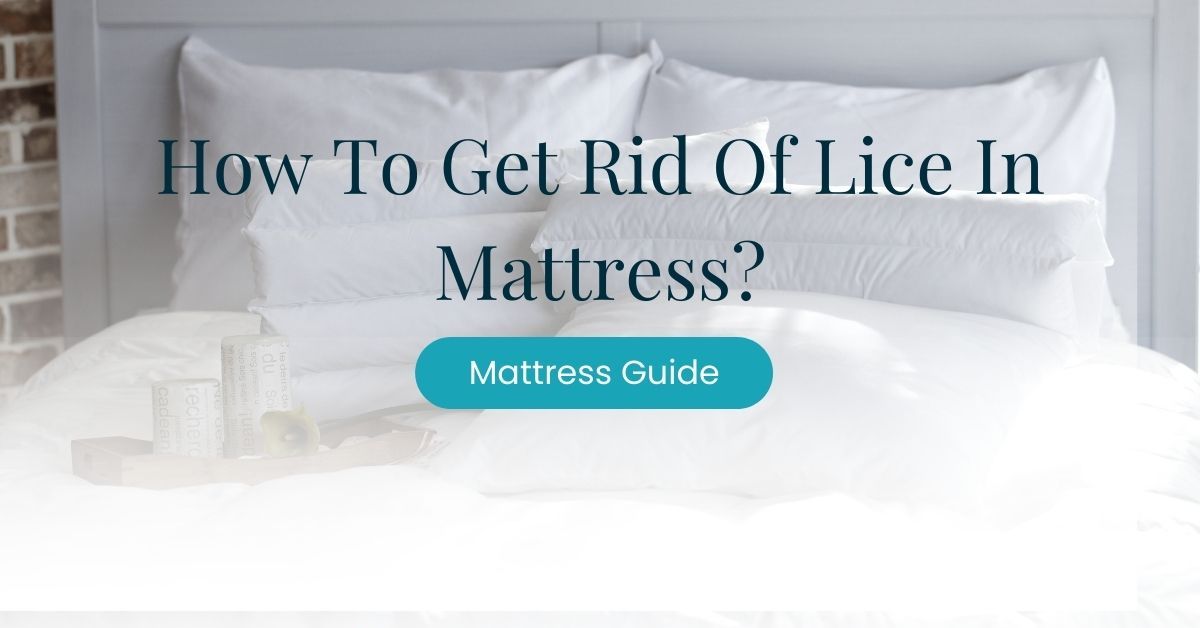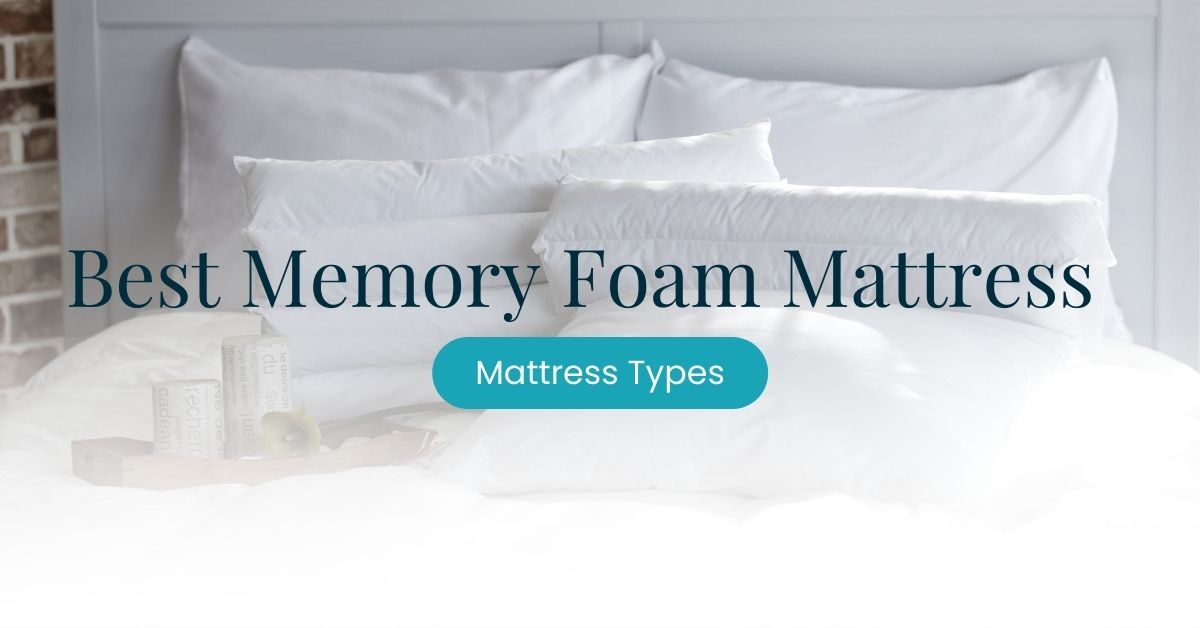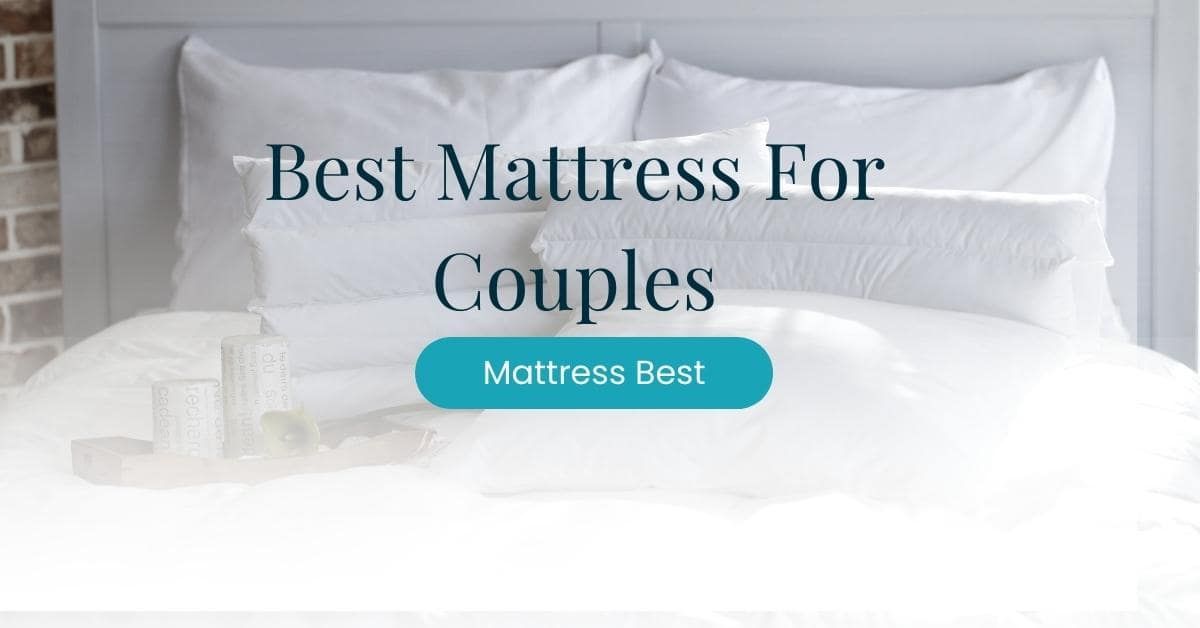Are you wondering what a mattress topper and a mattress pad have in common? If you are, you might also be wondering:
- what are their differences
- what benefits sleepers do toppers and pads have
- how do you choose between them
- can you use them together?
With so many bedding products, there’s bound to be some confusion. And that confusion leads to buying a mattress pad when you need a mattress topper or vice versa.
And more irritatingly, you might have to ask for refunds and deal with that hassle.
We’ve prepared a detailed guide covering the differences, similarities, and benefits of mattress toppers and pads.
Mattress Topper Vs. Mattress Pad
Sleeping preferences are always top of the list when considering any new bedding product. For instance:
- Do you love a soft bed, or maybe a firmer one?
- Are you a hot sleeper, or do you prefer sleeping warm?
- Do you have any aches and pains in the morning or when going to sleep?
Continue reading below as we cover the difference between a mattress topper and a mattress pad.
What Is A Mattress Topper?
Mattress toppers are purposely made to alter the overall feel of your bed from either soft or firm. In this aspect, both the mattress topper and the mattress pad are similar since they both share the purpose of altering the feel of your bed.
Mattress toppers are usually thicker than mattress pads, and you can buy mattress toppers with thickness ranges of 1-4 inches thick. The thicker the mattress topper, the more durable it will be since thicker toppers have thicker cores that support your weight when sleeping.
Mattress toppers are also divided into numerous types, which we’ll about to cover below:
Mattress Topper Types
As we mentioned above, numerous mattress topper types vary by the material used. Mattress topper types are usually divided into foam-based mattress toppers and natural mattress toppers.
Memory Foam
This type of mattress topper is the most popular and probably the best-seller of all mattress topper types.
Memory foam has viscoelastic properties (like a rubber band that springs back to its normal shape once stretched). You will notice this by simply pushing your palm against it, removing your hand, and seeing the material go back to its normal shape.
Memory foam mattress toppers are made from a breakthrough material called “viscoelastic polymer polyurethane”, derived from the famous PU foam, or polyurethane foam. Although, memory foam does make it hard to cut if you ever want to repurpose / upcycle.
And suppose you’re wondering who made this wonder foam. In that case, the NASA (National Aeronautics and Space Administration) scientists invented this.
They primarily made memory foam to reduce astronauts’ strain and pressure when travelling in space. Pretty cool, right?
Whilst they’re a comfortable choice, learning how to put a memory foam mattress topper on your bed ensures you get the most out of its powerful properties.
Latex Foam
Latex foam mattress toppers are one of the most popular mattress toppers. This type of mattress topper is made from the sap of rubber trees, so you might think this is a natural type of mattress topper.
However, latex goes through lengthy, detailed, and meticulous manufacturing processes called Dunlop and Talalay. If you’re not familiar with these manufacturing methods, let’s expound it:
Dunlop
The Dunlop manufacturing process is quicker and cheaper to produce latex foam. Dunlop latex is renowned for its durable and firmer feel. It is commonly used as a latex mattress topper core system. It provides stability and pressure resistance for a good night’s rest.
Talalay
On the other hand, the Talalay manufacturing process is more lengthy and intricate. With this in mind, Talalay is significantly pricier than Dunlop. Talalay latex, compared to Dunlop, is a softer and ventilated material and is primarily used for the comfort layer of latex mattress toppers.
Polyfoam
Polyfoam mattress toppers are relatives of memory foam mattress toppers. If you wonder why they have almost exactly the same material: polyurethane. Polyfoam has a spongy and springy feel and is manufactured with lesser chemical contents.
Polyfoam is also significantly cheaper than memory foam, so this is an excellent buy if you don’t have the budget for a memory foam mattress topper.
And suppose in case you’re a hot sleeper. In that case, polyfoam is more breathable than memory foam since the material is spongy and lets air pass through.
Down and Feather
Down and feather mattress toppers are made from the down and feathers of geese and ducks. If you happen to wonder what “down” is, it’s the feathers from the underside of geese and ducks that protect them from the coldness of the water.
Since down and feather mattress toppers are made from natural materials, no chemicals are involved except those used to disinfect the materials if needed.
One of the best reasons to get down and feather is they’re hypoallergenic, a perfect material for people with asthma and allergies.
Wool
Wool mattress toppers belong to the natural types of mattress toppers. The wool comes from sheep’s fur and is used for many different purposes, such as clothing, carpets, blankets, and mattress toppers.
Wool is notoriously soft and fluffy, which is a good factor when you’re a fan of soft and plush beds. And it also has good thermoregulation properties that make you cool when hot and makes you warm when it’s cold.
Mattress Topper Benefits
Here are the following benefits of using a mattress topper:
- Increase the lifespan of your mattress since the topper handles much of the weight and pressure when you lie down.
- Temporarily fixes sagging issues when indentations start to form
- Provide extra comfort. Ability to make a softer mattress firmer and vice versa – depending on the topper type.
- Alleviate sleep-related problems such as back pain.
- Ability to alter the overall feel of your bed. Whether soft or firm, cool or warm, body-hugging or not, you can choose the feel of your bed.
What Is A Mattress Pad?
A mattress pad makes your bed softer than usual and is commonly made from soft materials like cotton. Mattress pads can also make your bed cooler. They typically use breathable materials and are usually thinner than mattress toppers.
Mattress pads are a trendy bed accessory. In a 2016 survey, 52% of responders said they use mattress pads as a bed and sleep accessory.
Apart from cotton mattress pads, there are numerous mattress pad types which we’ll cover below:
Mattress Pad Types
Different mattress pad types have varying materials, characteristics, and benefits. We elaborate down below:
Cotton
Cotton mattress pads are unarguably the most popular mattress pad type out there. Cotton pads are soft and plush, adding to your bed’s overall softness and comfort.
The downside with cotton mattress pads is that they’re highly absorbent, which leads to staining and odours.
Wool
Wool mattress pads are made from a sheep’s coat, which adds softness to your bed. The not-so-good thing about wool mattress pads is that they’re expensive and not easy to maintain because they absorb moisture.
The good property of wool is that it is soft and breathable, so you’ll be cooler than ever when you sleep.
Fibrefill
Fiberfill mattress toppers use polyester and other recyclable additives to make synthetic alternatives to breathable down and feather and wool mattress toppers.
Because of that, fiberfill toppers are really cheap and easy to search for when you’re in a bedding store.
Fiberfill is stain-resistant and soft, making your bed more comfortable.
Latex
Latex mattress toppers are made from either synthetic or natural latex. This gives your bed a softer feel that slightly contours your body shape (a feature you can find in memory foam).
Latex is expensive, but it is more durable than most mattress pad types.
Memory Foam
Memory foam mattress pads are not easy to find because memory foam is known for use in mattress toppers. Nonetheless, memory foam mattress pads still do their jobs with minimal thickness compared to their topper counterpart.
Memory foam contours to your body, giving your body ample support and comfort, ideal for people with back problems.
Mattress Pad Benefits
Here are the following benefits of using a mattress pad:
- Mattress pads extend your mattress lifespan by reducing weight and pressure and offering light protection from stains.
- Although significantly thinner than toppers, mattress pads improve your bed’s comfort level.
- Mattress pads are more affordable than toppers; they are a great way to upgrade your bed without breaking the bank.
- Mattress pads can alleviate back-related problems by offering a softer feel for your bed.
Do I Need A Mattress Topper And A Pad?
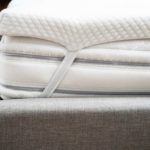
No, you don’t need to use a mattress topper and pad. Both serve a similar purpose: to make your bed more comfortable.
Comfort-wise, a mattress topper gives you more comfort than a pad can.
If you have the means to afford and use both, you can do it. After all, your personal preference is a priority when sleep health is concerned.
What’s The Difference Between A Pad And A Protector?
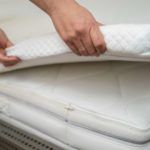
A mattress pad alters the feel of your bed to a certain extent. In contrast, a mattress protector is a fabric that protects your bed from liquid-induced staining from urine, sweat, vomit, and food and drinks.
Think of a mattress pad like your pillow, and the pillowcase that protects it from staining is the mattress protector.
Can You Use Two Mattress Toppers?
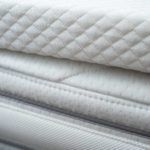
No, they will prematurely degrade as one places weight on the other. Mattress toppers are supposed to go on top of your mattress, so they can successfully alter the comfort level and feel of your bed.
Using two mattress toppers on top of each other is impractical. It will cost you more money in the long run because of premature damage.
Go for a thicker mattress topper or a dual-layer mattress topper if you want to upgrade your bed’s comfort level.


